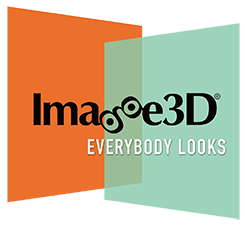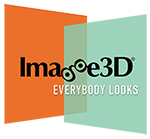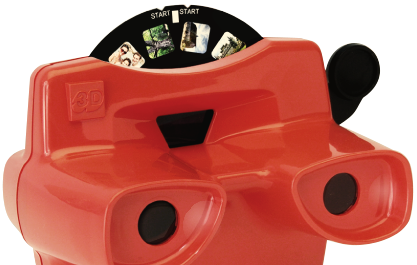RetroViewer
Image Treatment Options
2D / 2D with Floating Text
Two-dimensional, or 2D, photos do not appear to have depth to them. Our direct-to-consumer program prints submitted photos in 2D. In both the direct-to-consumer and business applications of the RetroViewer, floating text can be added to an image. This is text that is printed on a layer closer to the viewer, creating the impression of depth.


2D
2D image, shown here without floating text.
3D Layers
Our standard image treatment for business applications is 3D layers. We will provide you templates and guidelines for how to separate your images into layers. Our designer will then move these layers forward and back to create the perception of depth. Each layer looks flat, but by stacking the layers the eye sees them as closer or farther away.
In the example, you can tell that Tom (the cat) is in front of the buildings and Jerry (the mouse) is in front of Tom.
3D Layers
Images turned into 3D Layers create the perception of depth when viewed through a RetroViewer.
Movement here is only to show depth; RetroViewer images do not move.
3D Conversion
To convert an image to true 3D, our graphic artist works with your submitted 2D image to create the impression of almost infinite layers so that to your eyes, it appears as if the photo was originally taken in 3D. This process is highly specialized and requires a higher setup fee than our standard 3D layers.
When you look at the details - the cigar smoke, Tom's whiskers and hands - you can see that each detail has depth, and each figure seems to fully occupy its space.
3D Conversion
The same image converted to 3D shows the fullness of each figure in space. Notice especially the whiskers, smoke, and arms and hands as compared to the 3D layered image. The building and street also show depth.
3D Layered vs Conversion Comparison
The two 3D examples side by side:
3D Layered vs. 3D Conversion
Some photos will work only in 2D or in 3D conversion, and would not look good in 3D layers. For example, in a photo that has continuous content from foreground to background, there is nowhere to shift a layer forward.
In this frame from a reel for the American Museum of Natural History, you can see how beautifully the 3D conversion shows the space of the room and the reach of the dinosaur. There is no spot in the photo where you could break it into foreground vs background to create a layer. This photo would only work as a two-dimensional image, perhaps with floating text, or as a 3D converted image.
3D Conversion
Example of an image that could only be in 2D or 3D conversion (pictured here); there is no place to separate the crowd into layers for a 3D layered effect.
We would be happy to review your artwork at any point to weigh in on the best treatment for your images to meet your budget and the goals of your project.


